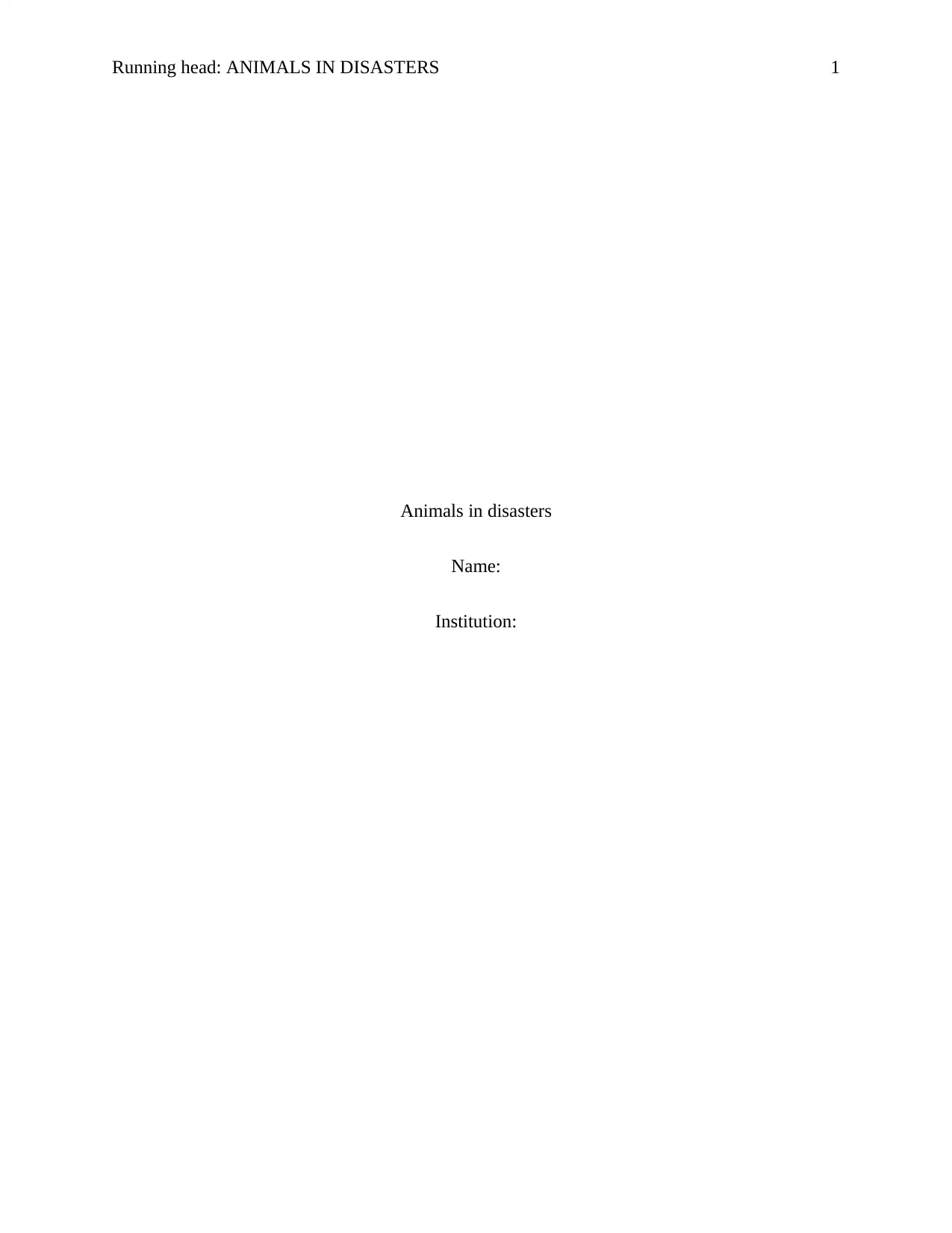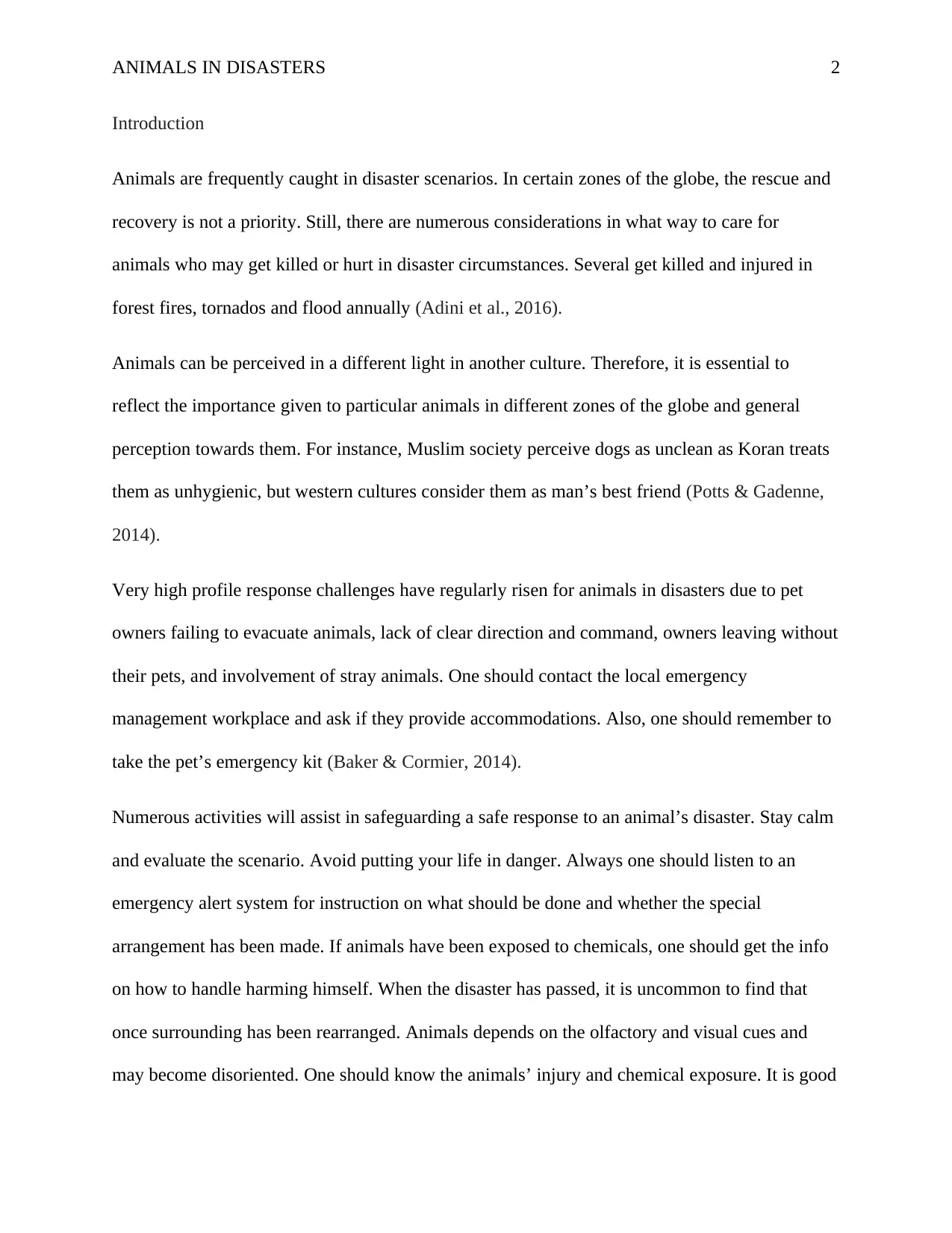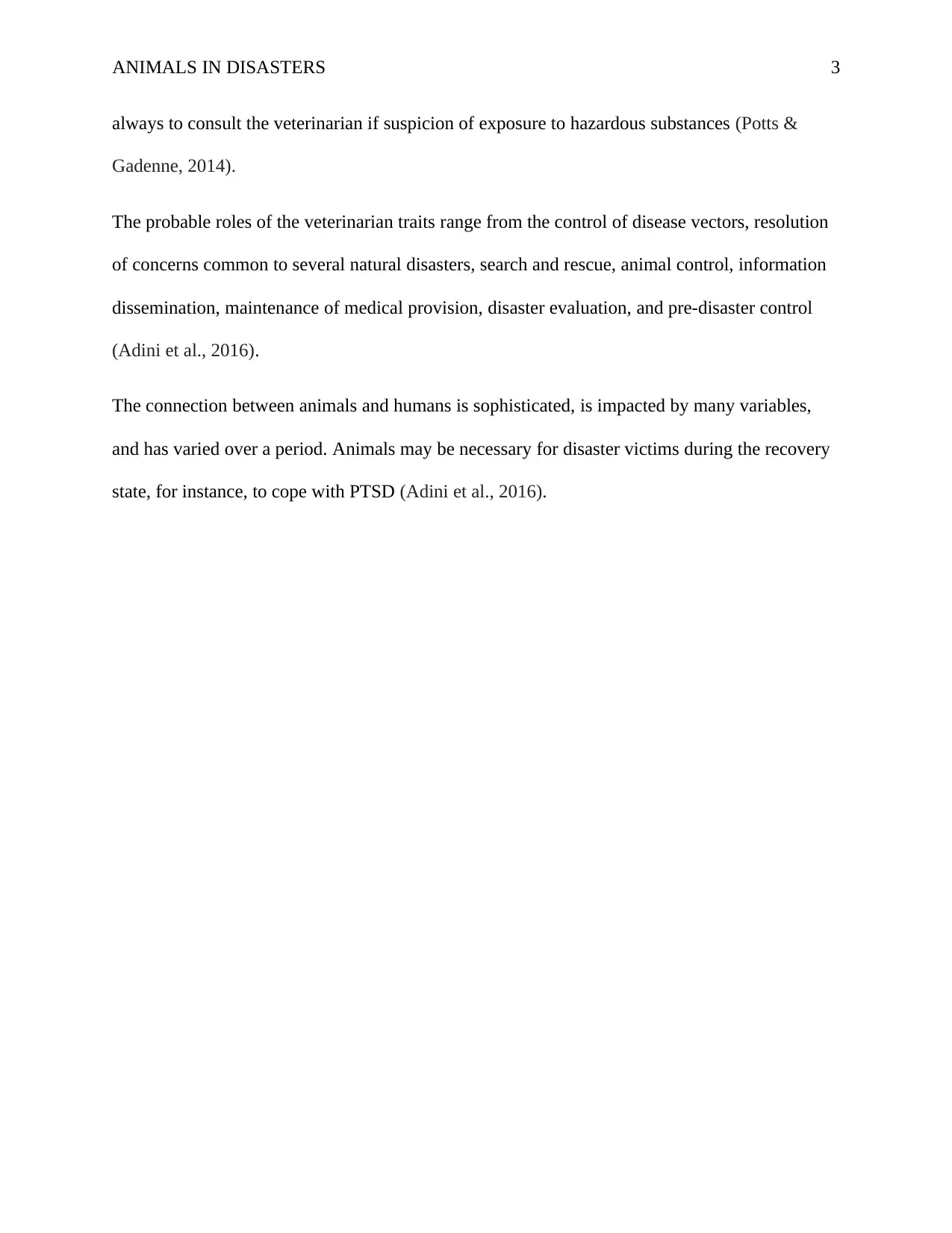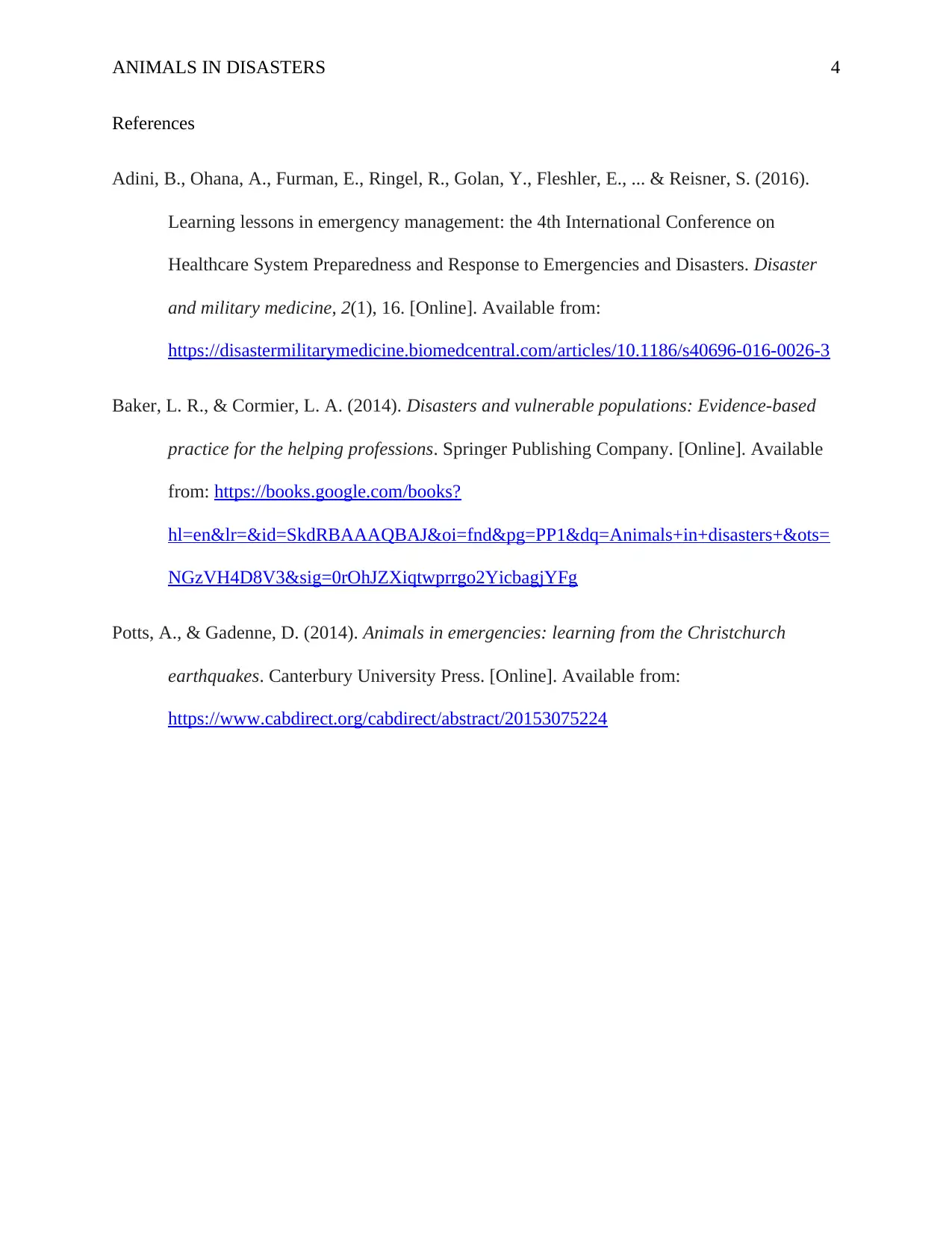Animals in Disasters: Veterinarian Role & Post-Recovery Healing
VerifiedAdded on 2022/09/28
|4
|647
|21
Journal and Reflective Writing
AI Summary
This journal entry reflects on the impact of disasters on animals, highlighting the importance of rescue and recovery efforts. It addresses the differing cultural attitudes towards animals, noting how perceptions vary globally, such as the contrast between Muslim views on dogs and Western cultures. The entry emphasizes the challenges faced in animal disaster response, including pet owner negligence and the involvement of stray animals. It suggests practical steps for safeguarding animals during disasters, such as contacting local emergency management and preparing emergency kits. Furthermore, it underscores the veterinarian's role in disaster management, from disease control to animal rescue, and highlights the connection between animals and humans, particularly in post-disaster recovery for victims coping with PTSD. The journal references key articles discussing animal disaster preparedness and response.
1 out of 4





![[object Object]](/_next/static/media/star-bottom.7253800d.svg)